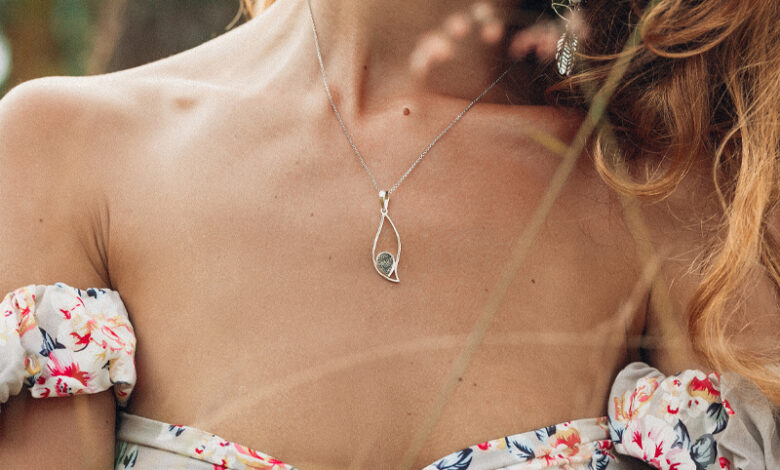How to Tell if Stingray Coral is Real or Fake

Stingray coral, with its multifaceted examples and enrapturing variety varieties, has turned into a famous decision for jewelry lovers around the world. Whether you’re attracted to stingray coral jewelry for its excellence, its unique case, or its true capacity as a venture, it means quite a bit to know how to recognize real and fake stingray coral. The market for gemstones and corals is overflowing with impersonations, and the capacity to recognize authentic stingray coral can save you from committing expensive errors. This article will direct you through the process of deciding the realness of stingray coral, with an emphasis on stingray coral pendants and different types of jewelry.
Figuring out Stingray Coral
Prior to plunging into distinguishing proof strategies, it’s critical to comprehend what stingray coral is. Not at all like genuine corals, which are marine creatures, stingray coral is fossilized coral, framed from ancient coral reefs that have been supplanted with minerals, for example, silica or calcium carbonate north of millions of years. This process brings about a hard, solid material that can be polished and molded into wonderful pieces of jewelry.
The name “stingray coral” is gotten from the presence of the material, which frequently looks like the skin of a stingray, with an example of little, roundish shapes that make a remarkable, practically mosaic-like texture. The shade of stingray coral can go from red to brown, with differing levels of black and white incorporations, contingent upon the mineral substance and the first coral construction.
Normal Purposes of Stingray Coral in Jewelry
Stingray coral is profoundly esteemed in the realm of jewelry because of its one-of-a-kind stylish characteristics and its unique case. It is regularly utilized in the making of pendants, rings, earrings, and beads. Stingray coral pendants are especially well known on the grounds that they feature the material’s particular example and variety varieties, making each piece unique. Jewelry producers frequently feature these normal examples by utilizing minimalistic settings that permit the coral to become the overwhelming focus.
Recognizing Real Stingray Coral
To guarantee that the stingray coral jewelry you buy is bona fide, it is fundamental to know about a few key factors that separate certifiable stingray coral from its impersonations. Here are the essential techniques for distinguishing real stingray coral:
Visual Examination
The most important phase in deciding if stingray coral is real is a cautious visual examination. Certified stingray coral displays an unmistakable example that looks like the texture of stingray skin, with little, firmly pressed, roundish shapes. These examples are regularly unpredictable, which is a characteristic quality of fossilized coral.
The shade of real stingray coral is another significant piece of information. Legitimate coral frequently shows a characteristic mix of varieties, like reds, earthy colors, blacks, and whites. These tones ought to seem natural, with a characteristic slope and occasional considerations or defects that are normal for regular coral. Interestingly, fake stingray coral might have excessively uniform examples or unnatural variety consistency, which can be an indication of engineered materials or colors.
Texture and Weight
The texture and weight of the material can likewise give important data about its validness. Real stingray coral, being fossilized and mineralized, will have a specific significance to it. When dealt with, it ought to feel strong and significant, not at all like impersonations produced using plastic or sap, which will feel lighter and less thick.
The outer layer of real stingray coral is normally smooth to the touch, however after looking into it further, it ought to have a fine, point by point texture that relates to the regular examples of the coral. Manufactured impersonations, then again, may come up short on fine texture, appearing excessively smooth or gleaming.
Amplification Assessment
Utilizing an amplifying glass or jeweler’s loupe, look at the coral intently. Under amplification, you ought to have the option to see the fine subtleties of the coral’s construction, including the minuscule, roundish shapes that structure its interesting example. These subtleties are challenging to repeat in manufactured materials. In the event that the material shows up excessively uniform or misses the mark on profundity and intricacy of regular coral, it is reasonable a fake.
Furthermore, bona fide stingray coral will frequently show normal varieties in example and texture under amplification, mirroring the natural processes that shaped it north of millions of years. Interestingly, fakes might have tedious or excessively predictable examples that propose they were machine-made.
Testing for Hardness
Real stingray coral, being a fossilized material, is moderately hard. On the Mohs scale of mineral hardness, it commonly positions somewhere in the range of 6 and 7, contingent upon the particular mineral substance. This implies that it ought to have the option to endure minor scratches from materials of lower hardness, for example, a copper coin or a fingernail.
To test the hardness, you can attempt tenderly starting to expose the coral with a material of referred to hardness, like a steel sharp edge (which is around 5 on the Mohs scale). Real stingray coral shouldn’t scratch effectively, while milder, engineered materials might show marks.
Professional Examination
On the off chance that you’re dubious about the validness of stingray coral jewelry, particularly while considering a huge buy, for example, a stingray coral pendant, it very well might merit looking for a professional examination. A confirmed gemologist or a legitimate jeweler with experience in coral and fossilized materials can give a conclusive evaluation. They might utilize progressed apparatuses, like spectroscopy or X-beam fluorescence, to investigate the material’s structure and affirm its validness.
Normal Fake Materials and How to Detect Them
There are a few normal materials used to emulate stingray coral, and knowing how to distinguish them can assist you with trying not to be misdirected:
Sap and Plastic: These materials are frequently used to make persuading copies regarding stingray coral. In any case, they will more often than not be lighter in weight and can have a shiny, engineered finish. The examples on gum or plastic impersonations might be excessively uniform or come up short on profundity found in regular coral.
Colored Coral: A few dealers might utilize lower-quality coral or significantly different kinds of fossilized material, coloring them to copy the presence of stingray coral. These colored pieces might display unnaturally striking tones or lopsided tinge. Over the long run, the color might blur, uncovering the real essence of the material.
Composite Coral: Composite materials produced using squashed coral blended in with tar or other restricting specialists can likewise be made look like certifiable stingray coral. These composites might have a sketchy appearance, with less characterized designs and a smoother texture.
End
Putting resources into stingray coral jewelry, especially stingray coral pendants, can be a remunerating experience, yet provided that you are positive about the validness of your buy. By diving more deeply into the visual qualities, texture, weight, and hardness of real stingray coral, you can fundamentally lessen the gamble of purchasing a fake. If all else fails, talking with a professional is dependably a judicious move toward guarantee that your venture is both veritable and significant. Likewise with any valuable material, information is your best safeguard against fakes in the realm of stingray coral jewelry.





